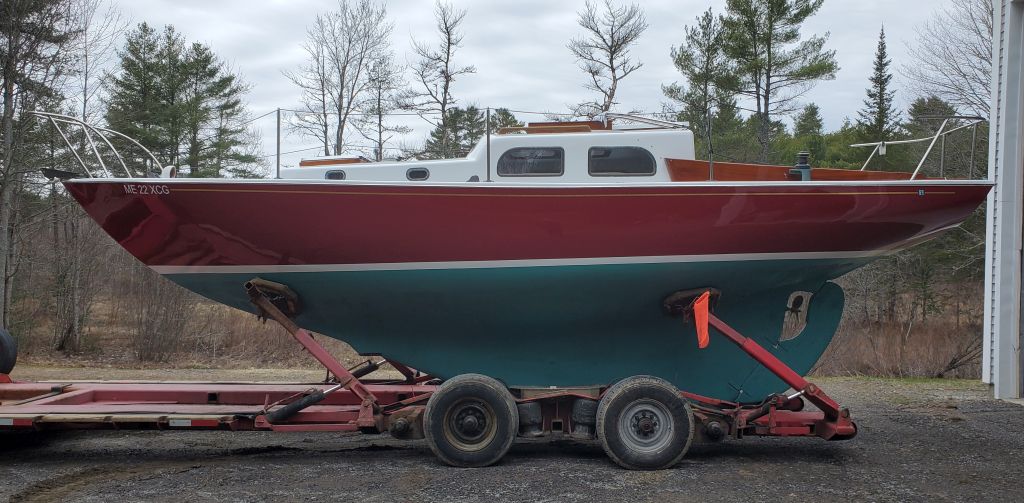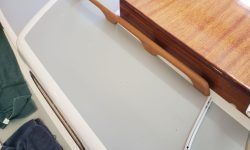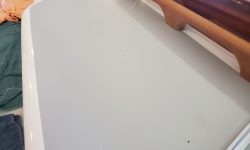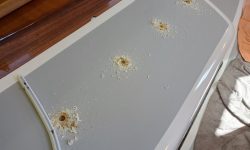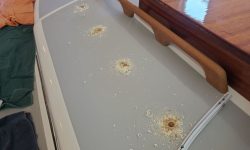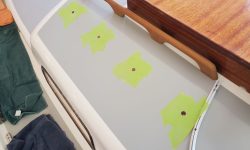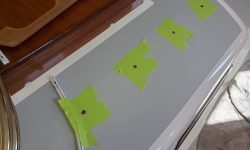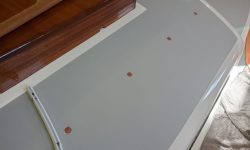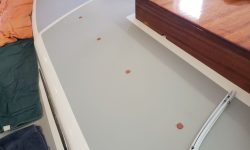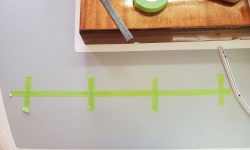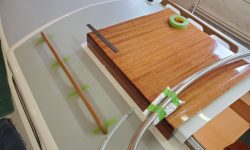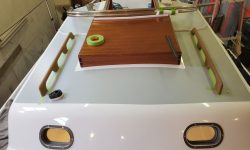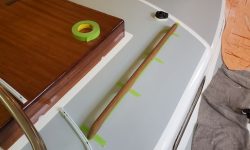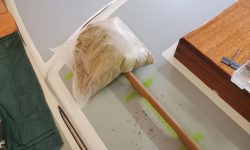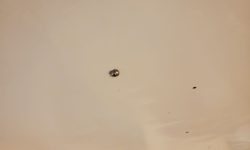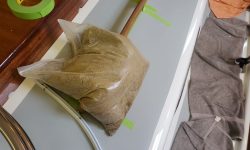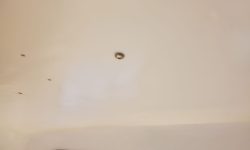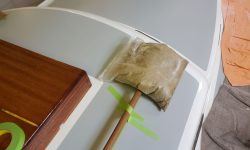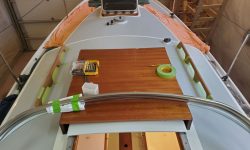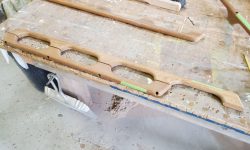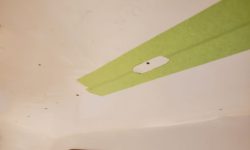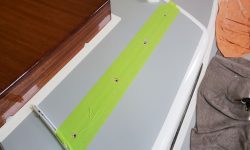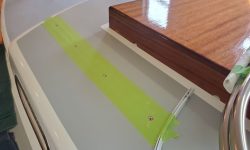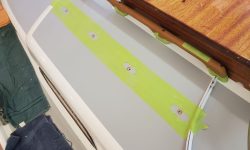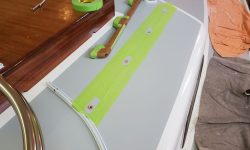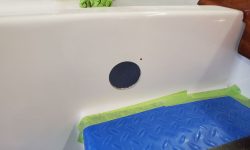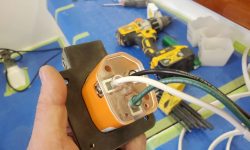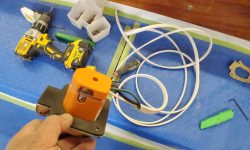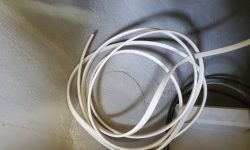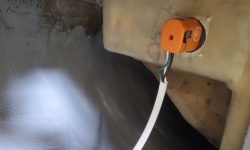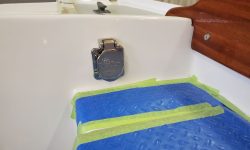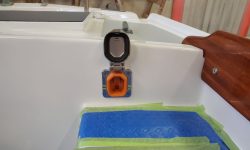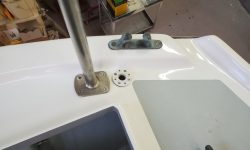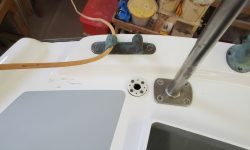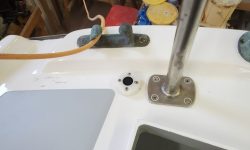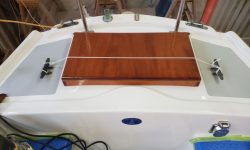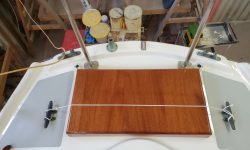April 7, 2022
Lyra Phase 2-53
Thursday
The owner asked that I take care of a few small jobs for him, now that launching time and the season was fast approaching. The first, and largest, of these jobs was to install handrails inside and outside the coachroof. Earlier in the week, I began the process by laying out the rails as needed (the outside rail was shorter than the inside because of the dodger–more on this as we go), drilling pilotholes from inside the boat using the old handrail holes as a guide (since they more or less aligned with the new rails), then overboring the holes from above to remove the top skin and core and filling the holes with epoxy in the usual way.
Now, a few days later and with the epoxy cured, I continued the installation process. The inside and outside rails would oppose each other directly, except for the extra length of the interior handrail (one extra opening), which we decided to try epoxying to the overhead versus a blind screw through to the outside. Because I chose to use the old hole locations (I probably shouldn’t have), I had to play around a bit with the two exterior rails to line them up properly with the holes, and symmetrically from side to side, then mark and drill the rails from inside the boat, a more difficult and time-consuming process than it would have been had I been starting afresh (hindsight: always start afresh).
I could just reach the aft end of the rail from the companionway on the top side, and also just reach it from underneath at the same time, so in this way I could predrill the first hole and drive in a small, temporary screw to hold it. With the aft end thus pinned, I aligned the rail where it needed to be (according to marks I’d made earlier) and used a sandbag to hold down the forward end so I could predrill and install another temporary screw there from inside. Then I could drill and mark the final two mounts from inside, before repeating the whole process on the second rail.
With the exterior rails marked for the screw holes, next I took all the rails down to the bench and drilled pilot holes all the way through to the top, then drilled 1/2″ holes partway through the rails from the top to accept the screw heads and bungs before finishing the pilotholes with a larger drill, large enough for the screw shanks. Aligning the interior rails with the exterior, I drilled pilot holes into each base for the fixing screws.
Back on deck, I finished off the holes through the coachroof with a larger bit and milled countersinks at each location before masking off all around to prepare for final installation. I tried a dry fit of the two rail pairs, but discovered that my pilot holes were just a bit small: they were binding the screws so I couldn’t pull the two rails tightly together. So I enlarged all the pilot holes till the screws passed through without friction, then finished up work on the rails for now by trimming the masking tape on deck where I’d marked it around the rail bases (and also on the aftermost base in the cabin, which would be epoxied), and masked the rails themselves to protect them against staining from the sealant during installation. It was growing late-ish and I decided to finish the installation another time, choosing instead to work on the other minor projects on my list during the remainder of the afternoon.
The first of these projects was to install, in a location the owner selected, a 110V shore power plug, which he could use at a shoreside facility and also to connect the portable generator to charge his electric motor battery bank. The installation was straightforward, and I installed a length of 12/3 cable to the fitting before installation so the owner could lead it forward to where he planned to install the main AC panel later.
Finally, I installed a pair of cable glands through the poop deck, near the pulpit bases on each side where indicated by the owner, for him to use for solar panel wiring and GPS antenna. These had stainless covers that I didn’t install now since the owner would have to unscrew the plastic caps to finish his wiring later.
With no more plans to work inside the lazarette, I secured the wooden hatch that the owner built with some line tied across, since at the moment it was only loosely fit.
Total time billed on this job today: 5 hours
0600 Weather Observation: 0600 Weather Observation: 30°, mainly clear. Forecast for the day: Mostly cloudy, chance of showers, 56°.


